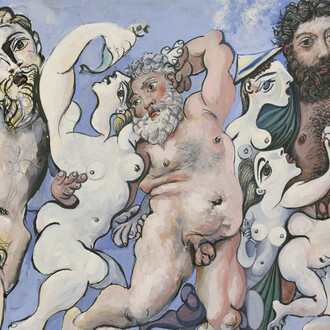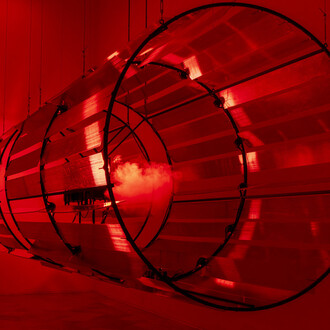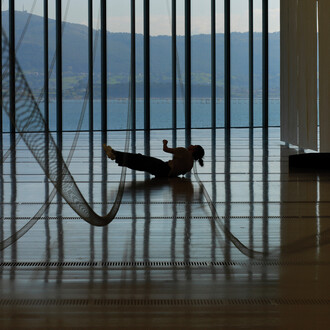souls are made of flesh flesh-colored souls.
souls are made of minced meatMozart wasn't always Mozart
what a problem are desires without a known object!
gigantic, vast desires, like great deserts, like storms
raging, obsessive, and sudden, heartbreaking but without any
material to devour, to measure, or to sink into; they remain vertical
roaring, about to
explode, and in the end they must settle only for the color of their shadows.
liquid and gaseous desires.(Luis Gordillo, Little memories, 2009)
Prats Nogueras Blanchard is delighted to announce Diccionario proteínico, a new exhibition by Luis Gordillo at its Madrid space during Apertura Madrid Gallery Weekend.
Diccionario proteínico [Protein dictionary] takes its title from the exhibition's main piece: a vibrant large-format polyptych, created in 2008 and revisited in 2024, which reflects Luis Gordillo's working method, in which process, re-articulation, and accumulation become key concepts. The artist describes the gestures made on the work in 2024 as "clarifications on the symptoms of the painting"—images that crackle in a group that could be many paintings in one—like someone moving a comma in a sentence, changing its meaning without altering the content.
Gordillo’s painting becomes a solid residual self reference, in which Sema D’Acosta will argue that the same syntactic problems resonate throughout the years: questions that cannot be resolved because they exceed the linguistic capacity of the medium, without absolute terms, without formulas to decipher the labyrinth, yet which serve the artist precisely in constructing a grammar that endures with energetic vitality in the pulse of each era1.
The rest of the works in the exhibition were all made in 2025, bringing together Máquina viva I and Máquina viva II, works based on his renowned heads (a body of work begun already in the 1960s), which represent moods and emotions. Here we see two identical heads in two different settings: a kind of mask, a recurring motif in several of the artist's works, resisting disappearance into the background, but also refusing to reveal itself completely. It is the setting that mutates and transforms, through various gestures, deformations and tonal variations, even reaching total inversion.
The technique of photographic collage (widely used by the artist since the 1970s and still one of the key elements of his practice today) is a working methodology that gives rise to a fragmentarism in Luis Gordillo's work “occurring within the work itself, as if the images were arranged on different planes or superimposed realities, yet in no way limiting"2. Thus, we find works that bring together a diversity of techniques and gestures, as in Centro animal. Another clear example is Libertad a cuatro patas: a photographic image created through a visceral collage technique, whose margins reveal Gordillo’s chorus—a choir of images that draw us out of the frame and then back into it. An aseptically carnal image: if technology here becomes flesh, flesh becomes plastic in the polyptych Organigrama anatómico – ‘a false nude’ that reformulates its own dismemberment over and over again throughout the sequence. It is this return, this ‘intense production of uncertainties’3, this twisting of the image without ever exhausting it and wandering among its fragments that characterises the work of Luis Gordillo.
On the occasion of Apertura 2025, Prats Nogueras Blanchard celebrates, together with carlier | Gebauer, the work of Luis Gordillo with two parallel exhibitions.
Notes
1 Sema D’Acosta: Tuétano pictórico, in Genetic islands, Fundación Canaria para el Desarrollo de la Pintura, 2021. Pg. 114.
2 Diego Vaya: El alma de la máquina, la máquina del alma, in Memorándum, Museo Universidad de Navarra, 2021. pg. 23.
3 Luis Gordillo, Little memories, 2009. pg. 93.













![Saul Steinberg, The museum [El museo] (detalle), 1972. Cortesía del Museo de Arte Abstracto Español](http://media.meer.com/attachments/dfbad16c22c5940b5ce7463468ac8879f3b4bf23/store/fill/330/330/042ecf3bcd2c9b4db7ddbc57cb32e950c095835f7b5cd55b6e1576a6e78c/Saul-Steinberg-The-museum-El-museo-detalle-1972-Cortesia-del-Museo-de-Arte-Abstracto-Espanol.jpg)


